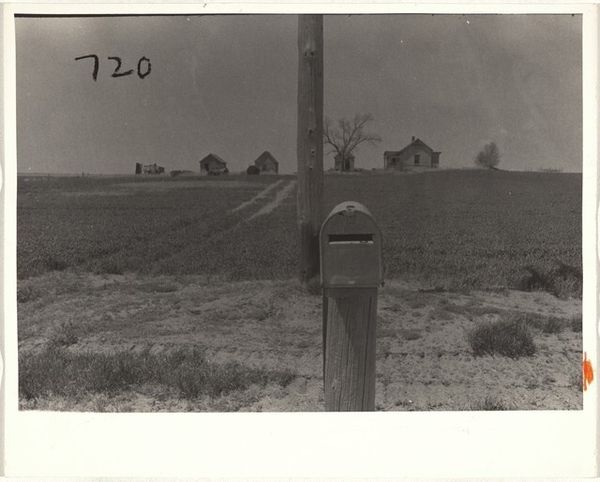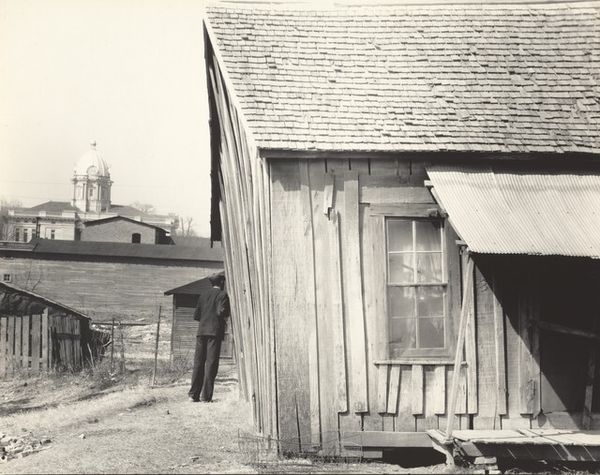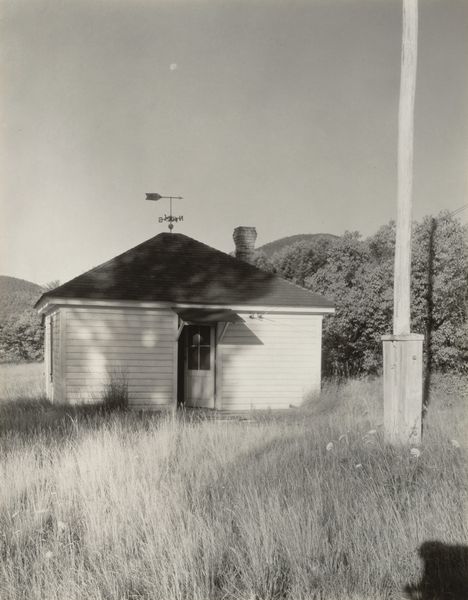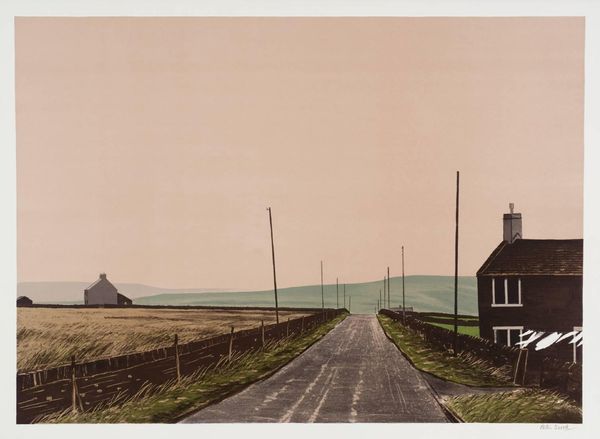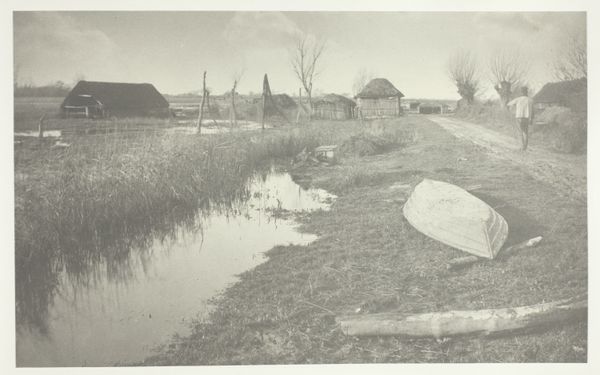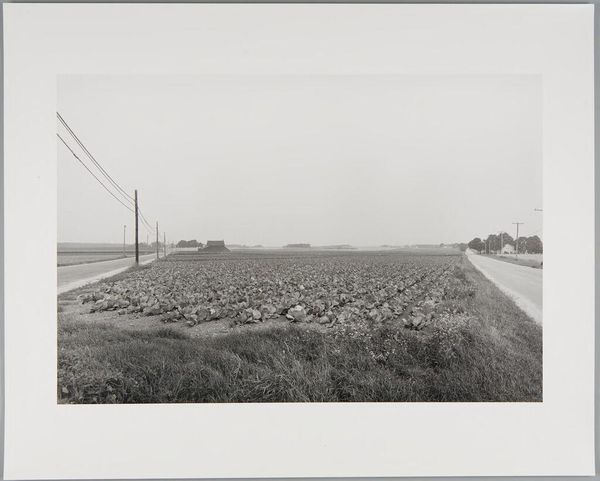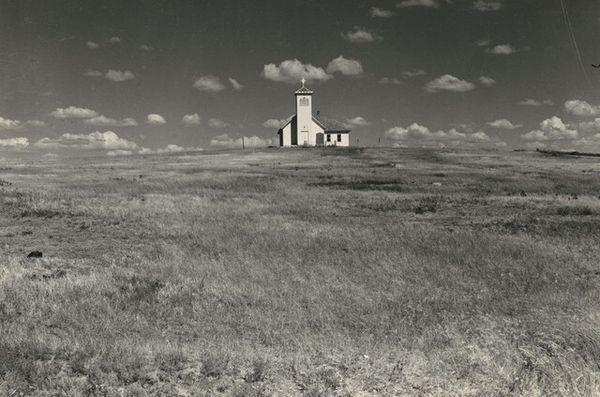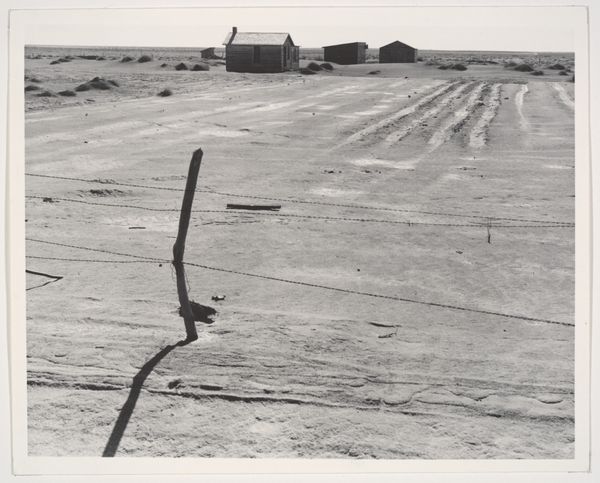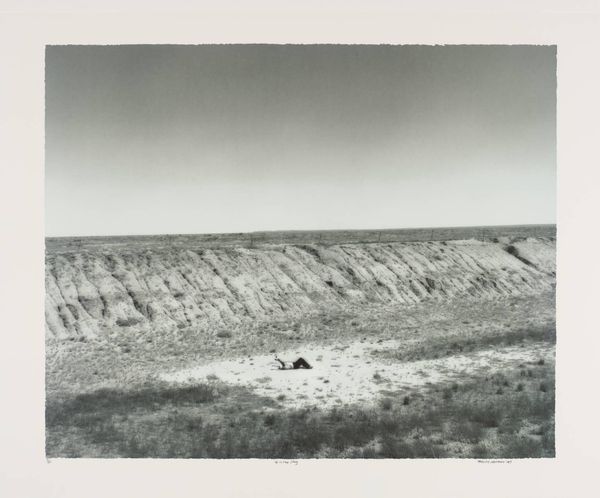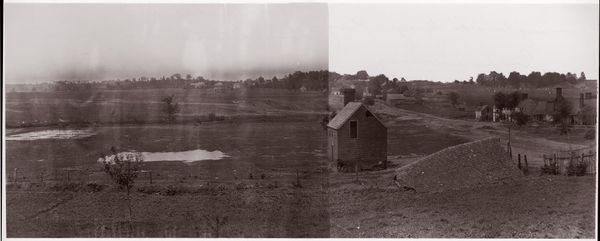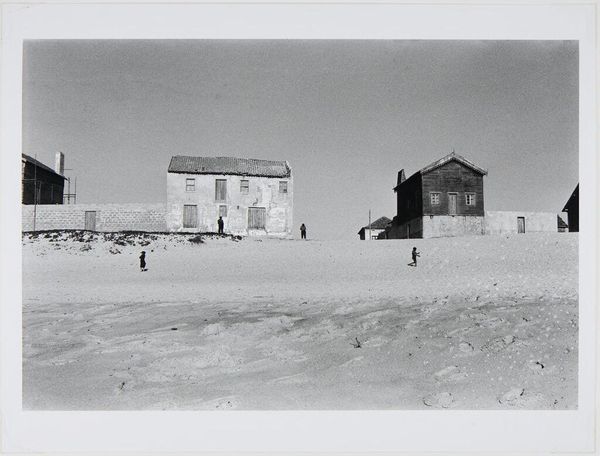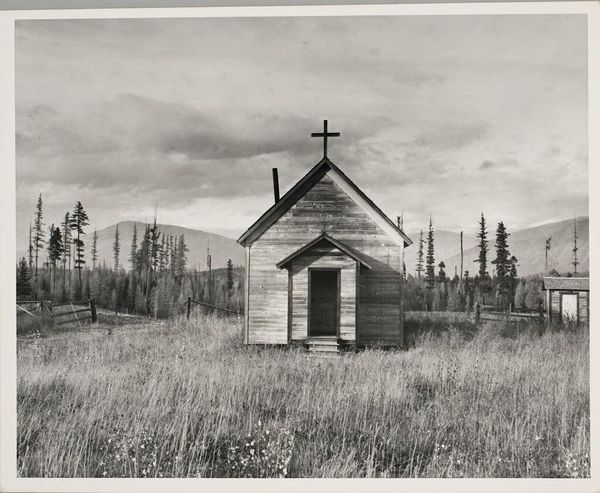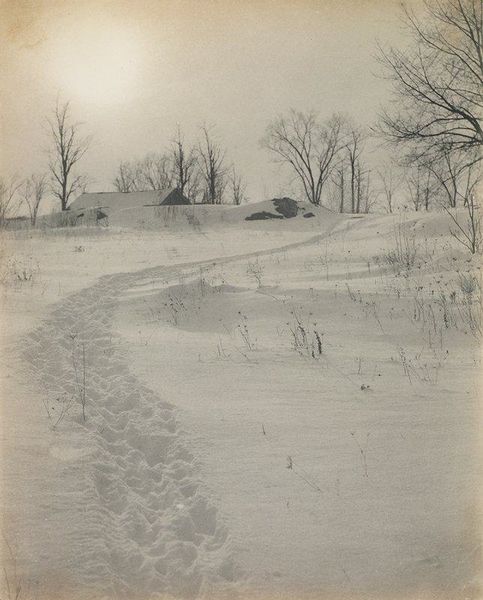
Power farming displaces tenants from the land in the western dry cotton area, Childress County, Texas 1938
0:00
0:00
Dimensions: image: 9.2 × 24.4 cm (3 5/8 × 9 5/8 in.) sheet: 20.5 × 25.4 cm (8 1/16 × 10 in.)
Copyright: National Gallery of Art: CC0 1.0
Editor: So, this is Dorothea Lange's "Power farming displaces tenants from the land in the western dry cotton area, Childress County, Texas," taken in 1938. It’s a gelatin silver print. I am struck by the emptiness of the scene; the desolate, curved rows of farmland leading up to that lonely, weathered house. It feels hauntingly silent. What story do you see in this photograph? Curator: I see a powerful visual commentary on the social and economic shifts occurring during the Great Depression. Lange, through the Farm Security Administration, documented the plight of displaced farmers. This image isn't just a landscape; it’s a staged political arena. Note how the curves almost push us *away* from the house; it seems unattainable. How do you think the title informs your reading of the work? Editor: It makes it very clear that this displacement is directly linked to technological advancements. Power farming – mechanized agriculture – replaced human labor, and the tenants were forced off their land. Curator: Exactly. The FSA aimed to raise awareness, implicitly advocating for governmental intervention. Consider the museum itself, exhibiting this photograph. What role do museums play in shaping how we understand the politics of images? Editor: It’s interesting – by exhibiting it, the museum is continuing to amplify Lange’s message, but perhaps also framing it within a specific historical narrative that the institution curates. There's a shift from a raw, urgent cry to something memorialized, something "art." Curator: Precisely. The photograph gains artistic value but also becomes subject to institutional interpretation, shaping public memory of the event. And the act of preservation itself... Whose stories get preserved, and who decides? Editor: This has definitely opened my eyes to thinking about photography and museums through a much more critical lens. It's more than just a picture; it's a document with agency and its meaning changes over time. Curator: And understanding those changing meanings, those forces *acting* upon a seemingly still image, is where true appreciation begins.
Comments
No comments
Be the first to comment and join the conversation on the ultimate creative platform.
